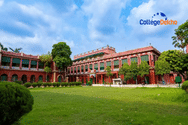Physical Chemistry | Structure | Quantum mechanics postulates, Schrödinger equations, Born interpretation, Dirac bra-ket notation, Particle in a box, Harmonic oscillator, Rotational motion, Hydrogen and hydrogen-like atoms, Multi-electron atoms, Approximation Methods, Atomic units. |
Molecular Structure and Bonding | Born-Oppenheimer approximation, Valence bond theory, LCAO-MO theory, Hybrid orbitals, LCAO-MO theory applications, Orbital theory (MOT), Hückel approximation. |
Group Theory | Symmetry elements, Point groups, Character tables, Vibrational modes, Hybrid orbitals. |
Spectroscopy | Atomic spectroscopy, Rotational, vibrational, electronic, Raman spectroscopy, Line broadening, NMR, Chemical shift, Nuclear coupling. |
Equilibrium | Laws of thermodynamics, Thermochemistry, Thermodynamic functions, Gibbs-Helmholtz relations, Chemical equilibria, Ionic mobility, Debye-Hückel law, Nernst Equation, Phase rule, Clausius-Clapeyron equation, Statistical thermodynamics, Phase diagrams. |
Kinetics | Reaction types, Steady-state approximation, Transition state theory, Catalysis, Kinetics of photochemical processes, Fast reaction kinetics. |
Surfaces and Interfaces | Adsorption, Surface catalysis, Langmuir-Hinshelwood mechanism, Surface tension, Colloids, Micelles. |
Inorganic Chemistry | Main Group Elements | Hydrides, Halides, Oxides, Oxoacids, Boranes, Silicones, Boron nitride, Borazines, Phosphazenes, Allotropes of carbon, phosphorus, sulfur, Acid-base concepts, Noble gasses. |
Transition Elements | Coordination chemistry, Crystal field theory, Electronic spectra, Magnetic properties, Reaction mechanisms, Substitution and redox reactions, Metal-metal bonds. |
Lanthanides and Actinides | Recovery methods, Periodic properties, Spectra, Magnetic properties. |
Organometallics | 18-Electron rule, Metal complexes, Homogeneous and heterogeneous catalysis. |
Radioactivity | Detection of radioactivity, Decay processes, Fission, Fusion. |
Bioinorganic Chemistry | Ion transport, Oxygen binding, Metalloenzymes, Electron transfer, Nitrogen fixation. |
Solids | Crystal systems, Crystal defects, Bragg’s law, Ionic crystals, Structures of compounds, Band theory, Metals and semiconductors. |
Instrumental Methods of Analysis | UV-visible, FTIR, NMR, Mass spectrometry, X-ray crystallography, Chromatography, Electroanalytical methods. |
Organic Chemistry | Stereochemistry | Chirality, Symmetry, Stereoisomers, Stereoselective synthesis, Conformational analysis, Geometrical and optical isomerism, Atropisomerism. |
Reaction Mechanisms | Kinetic vs. thermodynamic control, Substitution reactions, Addition reactions, Elimination reactions, Reactive intermediates (carbocations, carbanions, radicals, etc.). |
Organic Synthesis | Synthesis and reactions of various organic compounds, Use of reagents, Carbon-carbon bond formation, Concepts of multistep synthesis, Selectivity in synthesis, Functional group protection, Asymmetric synthesis, Bond forming reactions, Stereoselective additions. |
Pericyclic Reactions and Photochemistry | Electrocyclic, Cycloaddition, Sigmatropic reactions, Orbital correlations, Photochemistry of alkenes, arenes, and carbonyl compounds, Photooxidation, Photoreduction, Norrish reactions. |
Heterocyclic Compounds | Structure, Preparation, Properties, and Reactions of furan, pyrrole, thiophene, pyridine, indole, quinoline, and isoquinoline. |
Biomolecules | Structure, Properties, and Reactions of sugars, amino acids, peptides, proteins, nucleic acids, lipids, steroids, terpenoids, carotenoids, and alkaloids. |
Experimental Techniques | Optical rotation, Chromatographic techniques (TLC, column, HPLC, GC), Applications of UV-visible, IR, NMR, Mass spectrometry in structural determination of organic molecules. |











